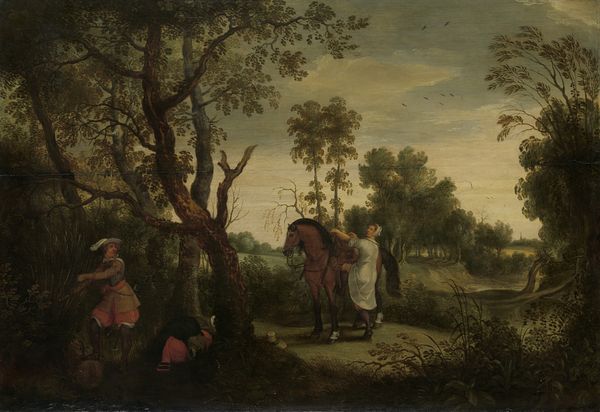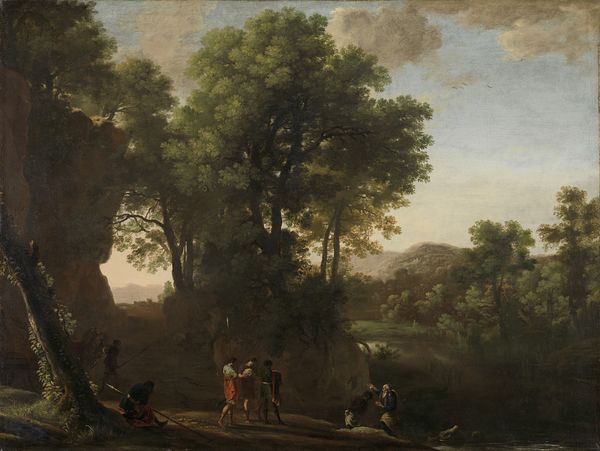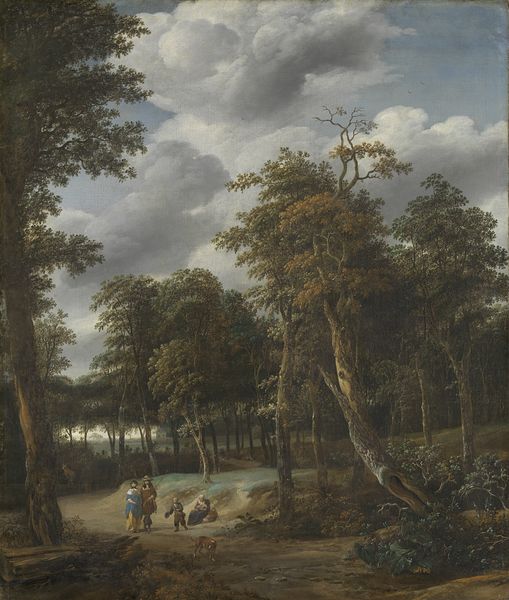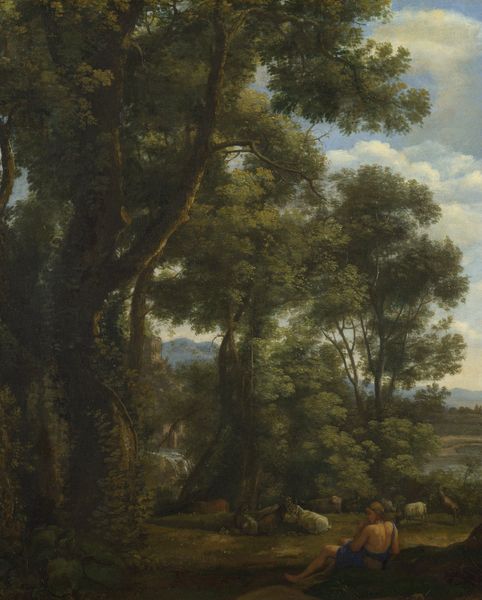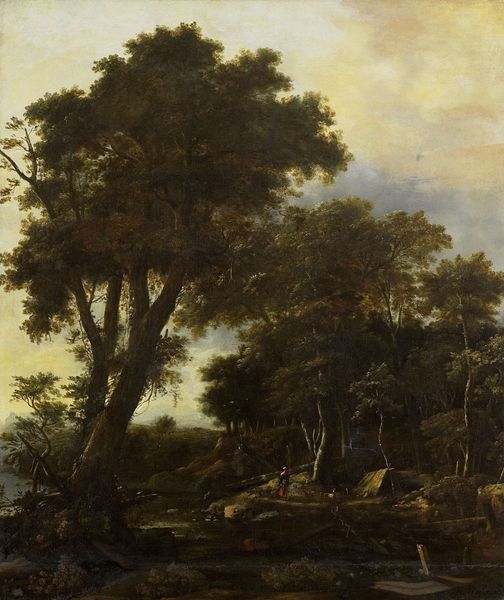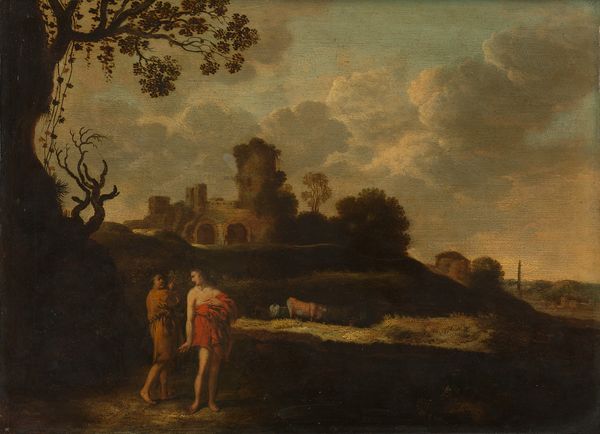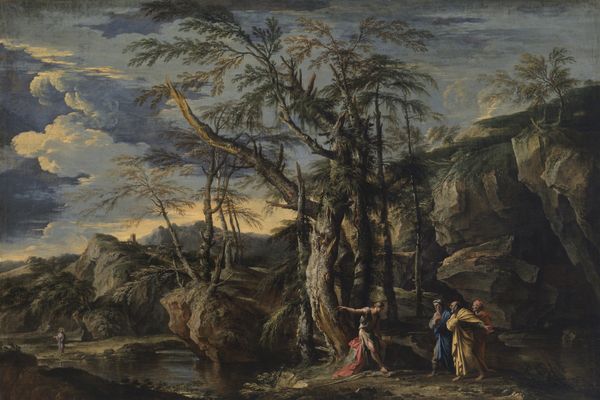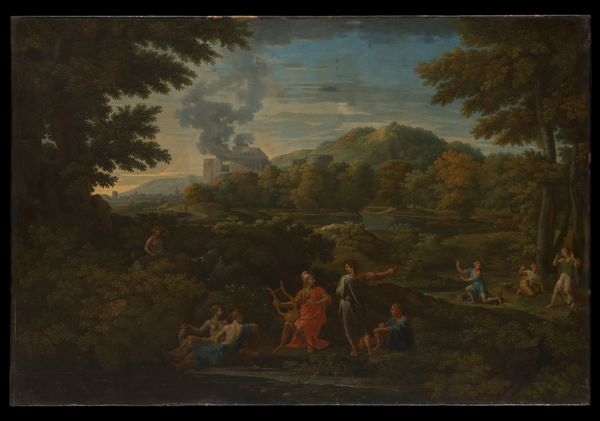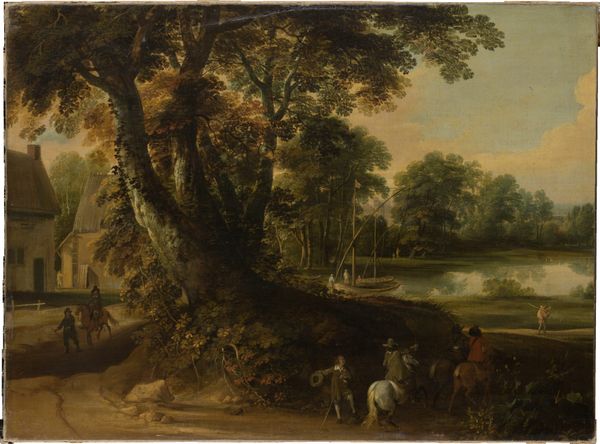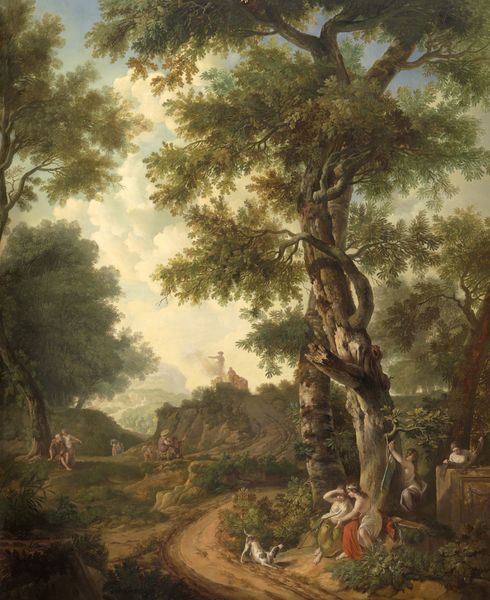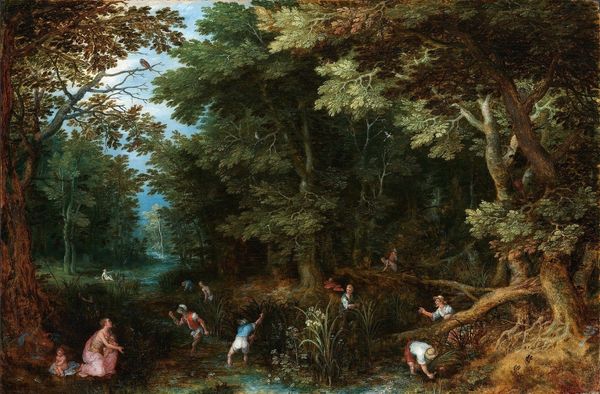
Landscape with the Angel Appearing to Hagar and Ismael 1664
0:00
0:00
oil-paint, canvas
#
baroque
#
oil-paint
#
landscape
#
figuration
#
oil painting
#
canvas
#
history-painting
Dimensions: 127.5 cm (height) x 180 cm (width) (Netto)
Curator: Before us is Francesco Cozza's "Landscape with the Angel Appearing to Hagar and Ishmael," rendered in oil on canvas around 1664. The artwork, currently housed in the SMK - Statens Museum for Kunst, presents a narrative scene embedded within a vast, sprawling landscape. Editor: The drama is palpable, isn't it? I’m immediately drawn in by the figures' gestures against the imposing backdrop of the forest. There’s a stark contrast in the coloring, between light and shadow, suggesting a tense or pivotal moment. Curator: Precisely. The scene illustrates a moment from Genesis, where Hagar, having been banished with her son Ishmael, is visited by an angel in the wilderness. This narrative is profoundly shaped by themes of exile, desperation, and divine intervention. The painting’s historicity positions it within a broader cultural discourse around identity, displacement, and the search for belonging. Editor: Absolutely, and the angel is so telling, perched on the tree branch, half ethereal, half grounded, suggesting divine intervention in a terrestrial sphere. The landscape itself, those dark, looming trees, evokes a sense of abandonment and uncertainty. Even the specific gesture of Hagar as she turns her head seems burdened. This scene is packed with Christian symbology as we may understand the motherly image to recall paintings of Madonna and child. Curator: Cozza masterfully employs the landscape as a mirror to the figures' inner turmoil. But, let’s think more about the representation of the mother figure. How are the power structures suggested here influencing and shaping this narrative representation of Hagar’s desperation? The gaze, the clothing, her subservient relation to God mediated through an angel... How might all of these represent her marginalized condition? Editor: That’s insightful. And it draws me to reflect further on Hagar as the maternal symbol of care and determination, shielding her son under very precarious conditions. The imagery taps into fundamental narratives about faith, hardship, but also of cultural resilience. It offers so much to those viewers that can relate through ancestry or by other facets of historical displacement. Curator: Considering its historical context, I feel compelled to examine the socio-political factors that allowed stories such as Hagar's to gain renewed relevance in art of this period, especially during a time of significant cultural upheaval and reformation. Editor: I agree, that historical framework offers the crucial context for interpreting not just Cozza’s technical skills but the timeless, layered meanings imbued into it. What initially struck me as a moment of dramatic action reveals itself as a nexus of interwoven cultural and religious signifiers. Curator: A fascinating interplay indeed, one that makes experiencing art of the past, constantly, a study on our present.
Comments
No comments
Be the first to comment and join the conversation on the ultimate creative platform.
